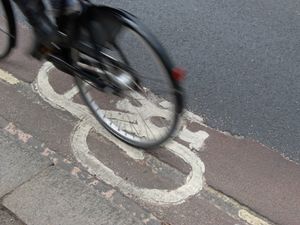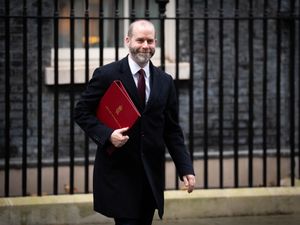Gender gap in barriers to cycling are widening – survey
Charity Cycling UK said since 2018 the perception of cycling appears to have improved for men but not women.

A gender gap in barriers to cycling has widened in the past seven years, a new survey suggests.
Cycling UK, the charity which commissioned the poll of 2,204 UK adults, said infrastructure investment and improvements in driver behaviour since 2018 have shifted the perception of cycling for some men, but have not had the same impact on women.
Compared with seven years ago, the proportion of men put off from cycling because of drivers overtaking too closely has reduced by six percentage points to 46%, but just one percentage point to 58% for women.
Concerns over a lack of segregated cycle lanes decreased by three percentage points to 35% for men, but rose by one percentage point to 44% for women.
The most recent survey suggested 58% of women believe their cycling journeys are limited by safety concerns and a lack of suitable infrastructure.
Men are twice as likely as women to have cycled within the past three months, at 30% compared with 15%.
Nearly one in three women (32%) said they have not cycled since they were under 16-years-old, compared with 22% of men.
Cycle instructor Tina, who did not give her surname, told researchers about an incident in which a van driver tailgated her, revved his engine and used his horn as she cycled alongside a woman she was teaching.
The 62-year-old from Stevenage, Hertfordshire, said: “He could have overtaken when it was safe, but instead, he chose to intimidate us.”
When the driver eventually passed, he pulled over and got out of his van to berate them, she recalled.
She added: “I explained that I was teaching this woman to ride safely and that it was legal and safer for us to ride together.
“It didn’t end up putting that woman off cycling, but for many women cycling solo, that experience might have been enough to put the bike back in the shed.”
The Highway Code states that cyclists can ride two abreast, particularly when accompanying “less experienced riders”.
Cycling UK director of external affairs Sarah McMonagle said many women face barriers to cycling “that simply don’t affect men in same way”.
She went on: “The best way to enable millions more women to cycle is to build a network of separate cycle lanes across the country.
“That’s why we’re calling on all four governments in the UK to invest at least 10% of their transport budgets in active travel.”
A DfT spokesperson said: “Everyone should be able to travel how they choose, which is why, just last month, we announced nearly £300 million to build 300 miles of cycle tracks and footways, helping people to make healthy journeys and reduce pressure on the NHS.
“Local authorities are responsible for active travel infrastructure, and are supported by Active Travel England to ensure that high design standards are met, enabling everyone to feel confident and safe walking or cycling.”
– The survey was conducted by research company YouGov earlier this month.





